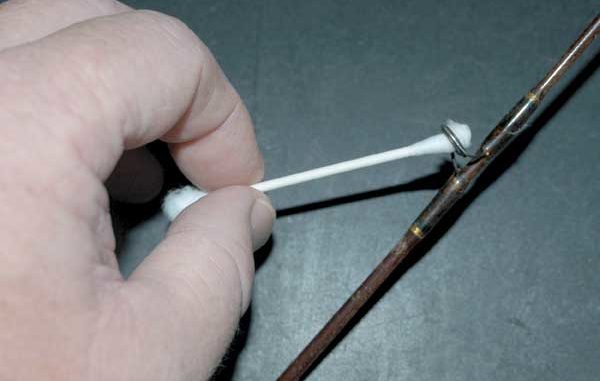
Like a lot of bass fishermen, I hate to have to do maintenance on anything or do a big clean-up. It’s tough when you’re traveling and fishing almost every day for months, because when you get home, or when you have a day to rest, you don’t want to spend it cleaning your reels or working on the little things that keep your boat pristine.
That’s why I’m usually thrilled at the end of each season, because I can actually take my time — when I’ve got a free day between putting up deer stands and planting food plots — and do the maintenance that every serious fisherman needs to do on his tackle and boat.
I’m as guilty as anyone else at not taking care of my tackle. None of us spend enough time doing that kind of thing, but like everything else, if you spend a little time on preventive maintenance, it can save you an awful lot of time and money in the long run. And when you get ready to put everything away for a couple of months — in my case, to hunt deer and go to my sons’ football games — it’s a perfect time to give everything a good going-over.
I start with my tackle. First, I’ll strip the line off my reels, at least down to the backing. Then, I’ll take the rods and reels outside, line ’em up, and wash ’em down with soap and water, then leave ’em outside in the sun to dry for a few hours.
It’s a good time to check the gears in your reels. I’ll oil the pawl gear and check the ball bearings on either side of the spool, and if they need it, put a little grease in there. I use a light oil and grease, and it seems to really help.
Then, I’ll check my rods, especially the guides. You spend the whole year stepping on them, pulling them in and out of your rod locker — hey, when you cram 30 rods into a compartment that’s supposed to hold 10, you can do damage to the guides. The way I check my guides for nicks and sharp places that can cut my line is with a Q-tip. I’ll run it back and forth through the guides, and if there is anything wrong with them, the Q-tip will catch on it.
If I have tips or guides that need to be replaced, I’ll tie a little piece of monofilament to that guide so it’s easy to find after I go pick up the replacement.
As far as a boat is concerned, the best thing you can do is take it to a dealer and have them winterize it and do the normal maintenance. But if you’re trying to cut down on expenses, you can change the grease in your lower units and maybe put in new spark plugs. Those are the best things you can do for the engine.
I will certainly check the batteries. The maintenance-free batteries don’t need more water, but you need to check the connections and make sure there’s no corrosion, because that can cut down on the life of your batteries, and it can cut down on how long your batteries will run your trolling motor every day.
Most of us definitely don’t do this next task enough, but I do, because I’ve seen a lot of major problems: I check the motor mounts and jack plate to make sure all the bolts are still tight. They bounce a lot on the water, and even moreso on the trailer, and if you let your jack plate loosen up, you can break the motor mount. You have all that power in your outboard, and you’re pushing that all that weight. If the bolts get loose, they can shear off, and you’ll lose your engine. So I check them.
I will check the bearings on my trailer; so many of the trailers like my Triton have wet bearings now; you check and make sure there’s still oil on them. You don’t have to repack them much anymore. I’ll take a minute or two to remove the prop on my trolling motor and get all the line off the shaft. Trolling motors are bad to pick up line like that, and it can cut your seal if you’re not careful. I’ll even take the big prop off my outboard to look for line. It doesn’t take long, and it’s worth it.
The last thing I really take care of on my boat are the live wells; a lot of people forget to do that. I’ll scrub them and clean them with soap and warm water. You’ve got crawfish claws, shad guts, all kinds of stuff down there, and it’s a good time to clean it all out. When I’m finished, I make sure I rinse them out with water to get all the soap out, then I leave the lids open to allow them to air out.
I think getting all of that bacteria out will help keep your fish alive longer. I think we’d be surprised if we knew how much bacteria there is in our live wells. We’ve got all that slime and fish guts and crawfish parts, and even if we refill them with water every day, that stuff stays in there.
When I’m finished and they’ve dried out, I’ll take my wet vac and vacuum out anything that’s dried up and stayed in there. I think doing that will help your live well pumps last a lot longer.
If you do all that in one sitting, it will take you a solid day to get it done, but it’s the kind of thing that you have to do — like filing your income tax.
Well, not that unpleasant.




Be the first to comment